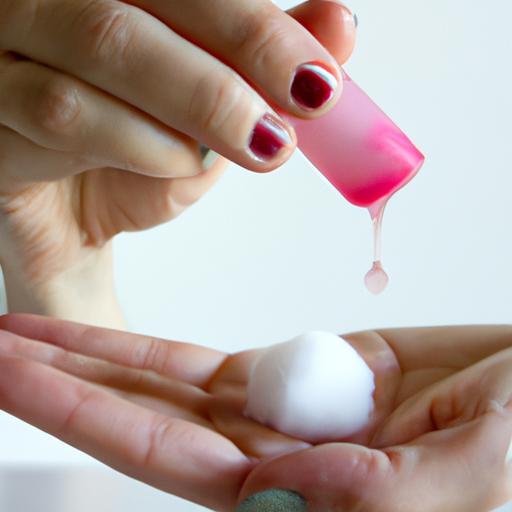Table of Contents
Nail glue is a strong adhesive commonly used for applying artificial nails or fixing broken ones. However, removing nail glue can be quite challenging if you are unaware of the correct techniques. In this comprehensive guide, we will provide you with step-by-step instructions on how to effectively and safely remove nail glue.
Understanding Nail Glue
Before attempting to remove nail glue, it’s crucial to understand the different types available in the market. There are two main types: cyanoacrylate and methacrylate. Cyanoacrylate nail glue is commonly used for temporary nail applications, while methacrylate nail glue is a stronger adhesive suitable for permanent applications.
Identifying the type of nail glue on your nails is essential, as the removal process may vary. Using the wrong technique to remove permanent nail glue can result in nail damage, pain, and even infection. Additionally, not removing nail glue properly can lead to bacterial growth, fungal infections, and other nail-related problems. Therefore, it’s crucial to remove nail glue as soon as possible to avoid any complications.
Preparing for Nail Glue Removal
Before you begin removing nail glue, gather the necessary tools and materials. You will need acetone, nail polish remover, olive oil, warm water, soap, a nail file, cotton balls, and a cuticle pusher. Taking safety precautions is also vital, such as wearing gloves and working in a well-ventilated area to avoid inhaling harmful nail glue fumes.
Preparing the nail area is equally important, as it can make the removal process easier. Start by removing any nail polish or decorations using a nail polish remover. Use a nail file to carefully file down the nails, removing any excess glue. Be cautious not to file too much, as it can damage your nails.
Methods to Remove Nail Glue
There are several methods you can use to remove nail glue, depending on the type of glue, the tools available, and your preference. Here are the most common approaches:
1. Soaking nails in acetone
- Fill a small bowl with acetone.
- Soak your nails in the acetone for 10-15 minutes.
- Gently push back the cuticles using a cuticle pusher.
- File down any excess glue with a nail file.
- Repeat the process until all the glue is removed.
- Wash your hands with warm water and soap, and moisturize your nails.
2. Using nail polish remover
- Apply a small amount of nail polish remover to a cotton ball.
- Rub the cotton ball over the nail until the glue starts to dissolve.
- Gently push back the cuticles with a cuticle pusher.
- File down any excess glue with a nail file.
- Repeat the process until all the glue is removed.
- Wash your hands with warm water and soap, and moisturize your nails.
3. Using olive oil
- Apply a small amount of olive oil to a cotton ball.
- Rub the cotton ball over the nail until the glue starts to dissolve.
- Gently push back the cuticles with a cuticle pusher.
- File down any excess glue with a nail file.
- Repeat the process until all the glue is removed.
- Wash your hands with warm water and soap, and moisturize your nails.
4. Using warm water and soap
- Fill a small bowl with warm water and add a few drops of soap.
- Soak your nails in the warm water for 10-15 minutes.
- Gently push back the cuticles with a cuticle pusher.
- File down any excess glue with a nail file.
- Repeat the process until all the glue is removed.
- Wash your hands with warm water and soap, and moisturize your nails.
5. Using a nail file
- Use a nail file to gently file the glue off the nails.
- Be careful not to file too much, as it can damage your nails.
- Wash your hands with warm water and soap, and moisturize your nails.
Post-Removal Care
After removing the nail glue, taking care of your nails is crucial to prevent any damage. Start by thoroughly cleaning the nails to eliminate any remaining glue residue. Soak the nails in warm water for a few minutes, then use a cuticle pusher to gently push back the cuticles and remove any leftover glue.
Moisturizing the nails is also essential, as the removal process can leave them dry and brittle. Apply a moisturizing lotion or oil to your nails and cuticles to keep them hydrated. Avoid activities that may damage your nails, such as biting or picking at them, and refrain from using harsh chemicals or tools that could cause harm.
Lastly, follow these tips to prevent future nail glue mishaps:
- Avoid using nail glue excessively, allowing your nails time to breathe between applications.
- Choose high-quality nail glue from reputable brands to avoid harmful chemicals.
- Remove nail glue as soon as possible to prevent complications.
- Carefully follow the instructions on the nail glue packaging.
In conclusion, removing nail glue may seem challenging, but by following the recommended techniques, you can safely and effectively remove it. We discussed the different types of nail glue, the necessary preparations, and various removal methods. We also provided post-removal care tips and guidance for preventing future nail glue mishaps.
Remember to take your time when removing nail glue and follow the instructions carefully. If you experience any pain or discomfort, seek medical attention immediately. By following these tips, you can remove nail glue safely and maintain healthy and beautiful nails.





